
The Fort Wayne Old City Hall Building in downtown Fort Wayne, Indiana operates as a museum known as The History Center, and has served as headquarters for the Allen County–Fort Wayne Historical Society since 1980. The Richardsonian Romanesque style sandstone building was designed by the architectural firm Wing & Mahurin and built in 1893. It served as a functioning city hall for the city until 1971 when local officials moved to the City-County Building.
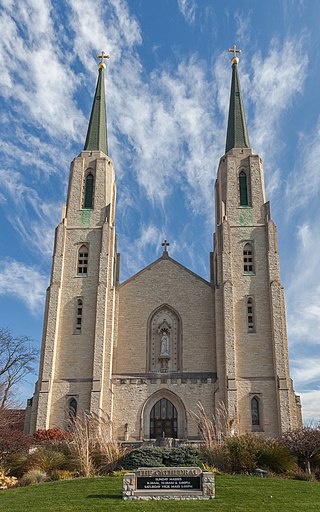
The Cathedral of the Immaculate Conception in Fort Wayne, Indiana, is the primary cathedral of the Roman Catholic Diocese of Fort Wayne-South Bend, headed by Most Rev. Kevin Carl Rhoades. The parish was established in 1836, making it the oldest in Fort Wayne. The church was erected in 1860.
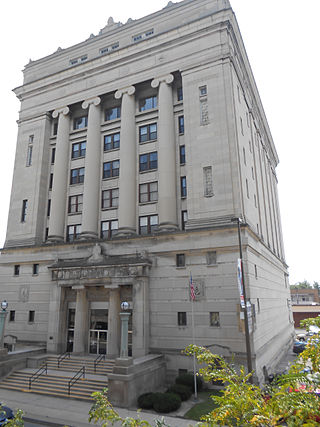
The Masonic Temple is a historic Masonic Lodge located at Fort Wayne, Indiana. It was designed by architect Charles R. Weatherhogg (1872–1937) and built in 1926. It is a 12 story, rectangular Classical Revival style steel frame building faced with Indiana limestone. The front facade features four five-story Ionic order columns alternating with window openings.
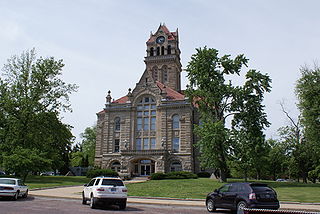
The Starke County Courthouse is a historic courthouse located at Knox, Starke County, Indiana. It was designed by the architectural firm of Wing & Mahurin, of Fort Wayne and built in 1897. It is a three-story, Richardsonian Romanesque style Indiana Oolitic limestone and terra cotta building. It has a Greek cross-plan and is topped by a tiled hipped roof. It features a 138 feet tall clock tower located at the roof's center.

The Bass Mansion, also known as Brookside, is an administrative building and historic structure at the University of Saint Francis located in Fort Wayne, Indiana. The hand-carved, sandstone mansion was the private residence of industrialist John Henry Bass from 1902 to 1944. The Sisters of Saint Francis of Perpetual Adoration bought the home and more than 65 acres of surrounding landscape from the Bass family in 1944 and relocated their college. Since 1944, the mansion served as library and residence to the college.

The McColloch-Weatherhogg Double House, also known as the J. Ross McCulloch House, is a historic residential building constructed in 1883 in the Victorian Gothic Revival style at 334-336 E. Berry St., Fort Wayne, Indiana. The building is now the home of United Way of Allen County and was listed on the National Register of Historic Places on December 7, 2001.

Fairfield Manor, also known as the Fairfield Manor Apartments, is a historic apartment building located one mile south of downtown Fort Wayne, Indiana. It was designed by noted Fort Wayne architect Charles R. Weatherhogg. It is a seven-story plus basement, rectangular, Colonial Revival style brick building with a slight "bar-bell" form. It has American Craftsman and interior Art Deco design elements. The building measures 68 feet by 190 feet.
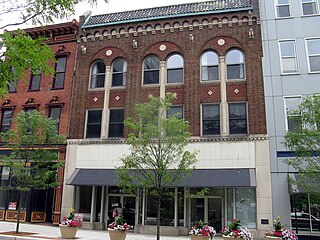
Kresge–Groth Building is a historic commercial building located in downtown Fort Wayne, Indiana. It was built in 1926, and is a three-story, three-bay, Spanish Colonial Revival style brick building. The front facade features three round-topped wall arches and two-story engaged limestone columns. The building originally housed the S. S. Kresge Company and after 1933 the Earl Groth Company. It was occupied by from 1964 to 1971 by Walgreen Drug Store.
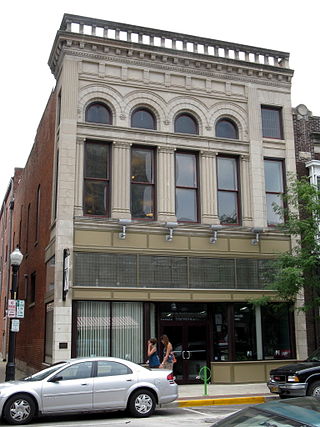
Louis Mohr Block is a historic commercial building located in downtown Fort Wayne, Indiana. It was built in 1891, and is a two-story, five bay, Richardsonian Romanesque style brick building with a three-story rear addition erected in 1926. The front facade features cut limestone cladding on the upper part and round arch windows. The building was remodeled in 1963. For many years the building housed a women's clothing store, The Vogue.
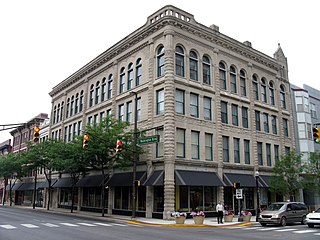
Schmitz Block, also known as the Noll Block, is a historic commercial building located in downtown Fort Wayne, Indiana. It was built in 1888, and is a four-story, "L"-shaped, Richardsonian Romanesque style brick building clad entirely in cut limestone. It features round rock-faced piers which extend the full height of the building and round arch windows. It was remodeled about 1912 after bring purchased by William F. Noll. For many years the building housed Hutner's Paris and Nobbson, a women's clothing store.
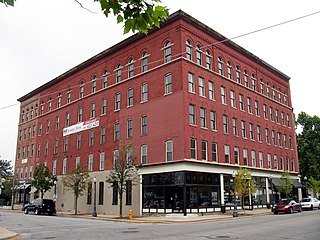
Randall Building, originally an extension of the Randall Hotel, is a historic commercial building located in "The Landing" section of downtown Fort Wayne, Indiana. It was built in 1905, and is a large five-story, Renaissance Revival style brick building. For many years the building was occupied by Seavey Hardware.

The Journal-Gazette Building is a historic commercial building located in downtown Fort Wayne, Indiana. It was designed by noted Fort Wayne architect Charles R. Weatherhogg and built in 1927–1928. It is a four-story, 13 bay, red brick building with limestone trim in the Chicago Style. The seven central bays feature round arch window openings. For many years the building housed The Journal Gazette newspaper plant.

John Brown Stone Warehouse, also known as The Canal House, is a historic commercial building located in downtown Fort Wayne, Indiana. It was built in 1852, and is a two-story, three-bay, gable front stone building. The building measures 22 feet wide and 50 feet deep. It was built by John Brown out of salvage and "waste" materials from his business as stone merchant and mason. It is the oldest commercial building in Fort Wayne and has been renovated to house offices.

Fort Wayne Printing Company Building is a historic commercial building located in downtown Fort Wayne, Indiana. It was built in 1911, and is a four-story, three-bay, Classical Revival style brick building with white terra cotta trim.

Hugh McCulloch House is a historic home located at Fort Wayne, Indiana. It was built in 1843, and is a two-story, three bay by four bay, Greek Revival style painted brick building. It features a projecting front portico supported by four Doric order columns. An Italianate style addition was erected in 1862. It was built by U.S. statesman and United States Secretary of the Treasury Hugh McCulloch (1808-1895), and remained in the family until 1887. The house was purchased in 1892 by the Fort Wayne College of Medicine, who expanded and remodeled the house. It was sold in 1906 to the Turnverein Verewoerts, or Turners, who owned the building until 1966.
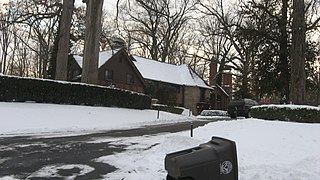
Robert M. Feustel House is a historic home located at Fort Wayne, Indiana. It was built in 1927, and consists of a series of irregularly intersecting two-story, Tudor Revival style hip-roofed masses. It features polygonal chimney stacks, half-timbering with herringbone brick infill, and diagonal projections at the juncture of the wings. It was built by Robert M. Feustel, a locally prominent entrepreneur.

Harry A. Keplinger House is a historic home located at Fort Wayne, Indiana. It was built about 1893, and is a 2+1⁄2-story, Richardsonian Romanesque style brick dwelling with a rock-faced stone foundation. It features a steeply pitched roof and dormers, round two-story towers at each of the front corners with conical roofs, and a one-story front porch connecting the two towers. It was built by Harry A. Keplinger, a prominent turn-of-the-20th century businessman.

Alexander Taylor Rankin House, also known as the Maier-DeWood Residence, is a historic home located in downtown Fort Wayne, Indiana. It was built about 1841, and is a 1+1⁄2-story, three bay by two bay, Greek Revival style brick dwelling. A one-story frame addition was erected around 1855.

Engine House No. 3 is a historic fire station located in downtown Fort Wayne, Indiana. It was designed by the architectural firm Wing & Mahurin, with the original section built in 1893 and an addition built in 1907. It is a two-story, Romanesque Revival style red brick building. The building houses the Fort Wayne Firefighters Museum.

Blackstone-State Theater is a historic theatre building located at South Bend, St. Joseph County, Indiana. It was built in 1919, and is a four-story, Classical Revival style brick and terra cotta building. The first floor has four storefronts and the theatre entrance. The upper floors form a loggia that rises to the fourth floor and supported by four pairs of fluted columns. The theater originally sat 2,500 patrons.
























